Podcast: Play in new window | Download
Subscribe: Apple Podcasts | Spotify | Email | TuneIn | RSS
Hawaii is more than just a paradise of beaches and blue sea. In this interview, mystery and memoir author, Toby Neal, brings the wild and beautiful islands to life.
Toby Neal is an award-winning ‘USA Today’ bestselling author of mysteries, thrillers, and romance with over 30 titles. She’s also a mental health therapist, and today we’re talking about Freckled: A Memoir of Growing up Wild in Hawaii.
In the interview, we discuss:
- Why Hawaii is more than just white sand beaches and cocktails with umbrellas
- A tip for the Hawaiian language
- Recommended places to visit that take you in nature and away from the main tourist hotspots
- The Hawaiian legend of Ohia and Lehua
- How the volcanic environment impacts Hawaii
- Embracing duality in finding home — the ocean of Hawaii and the redwoods of California
- Writing about the darker side of the islands
- Book recommendations
You can find Toby and her books at www.TobyNeal.net and on Instagram @tobyneal
Joanna: Welcome to the show, Toby.
Toby: Thanks so much, Joanna. I’m delighted to be talking with you today.
Joanna: Oh, it’s great to have you. Now I want to actually start with a quote from ‘Freckled,’ ‘The islands either accept you or spit you out,‘ because I think Hawaii is one of those places that people think is all white sand beaches, palm trees, and drinks with umbrellas in.
What are some of the places that you love about Hawaii that are less tourist brochure?
Toby: Oh, absolutely, I have to start with the Nā Pali Coast on Kauai. It is so insanely gorgeous, and there are so many wonderful ways to see it as a visitor.
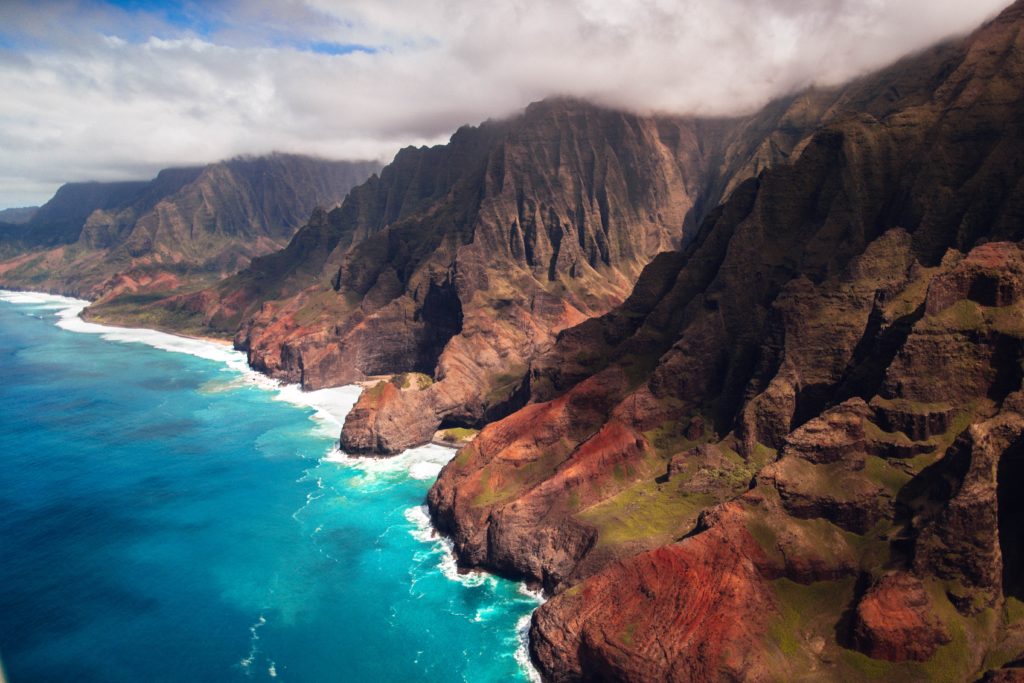
It’s one of these places in our world that is relatively unchanged from the time that I grew up there in the ’60s and the ’70s. So whether you see it by helicopter or by one of the zodiac boat tours or whether you hike that coast, it is one of the crown jewels of the planet, I truly believe.
It just has this incredible energy to what I’ve written about it in several of my mystery novels. One of them, Wired Dawn, uses the Coast Nā Pali Coast as a really fun location. So it’s definitely a highly recommended spot as is Haleakala on Maui. I have a home halfway up Haleakala, and it is an extinct volcano, 200 years since it’s been active. And one of the highlights of your Hawaiian vacation would be to go up there, and unlike the highly touted sunrise on Haleakala, I recommend the sunset.
You’re going to see so many incredible colors. And the view from the 10,000 feet down across the island and out to the ocean is incredible. It’s much less crowded at sunset. They even have to book your sunrise times online now because it’s gotten so crowded up there. So I highly recommend a sunset off of Haleakala.
Joanna: That is a good tip. What’s so lovely talking to you is you know all the pronunciation, because I think people just assume it’s like American English, but it’s not, right?
Toby: The great thing with Hawaiian language is that there’s much more use of vowels than in English. Every single vowel is pronounced. So that’s your key. Like a word like Kapaa, K-A-P-A-A, and it’s one of the places that I lived on Kauai, you don’t put vowels together into a blurred sound. Each one is pronounced. So that’s your little takeaway lesson for the day on pronunciation.
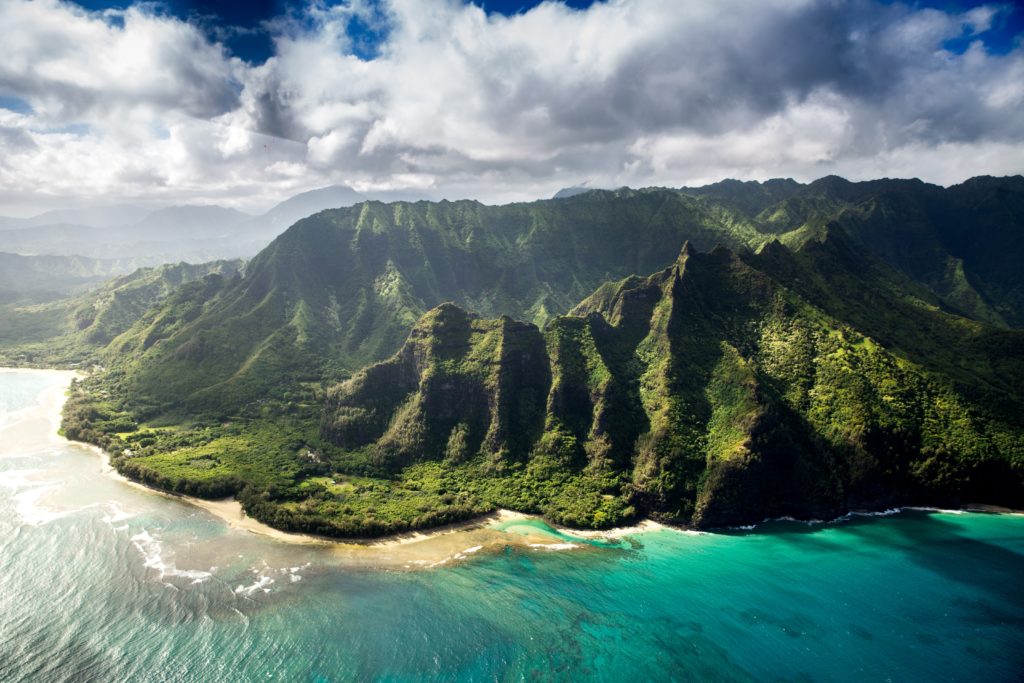
Joanna: That’s great. Coming back to the Nāpali Coast, is it all palm trees? I got the sense from your memoir that the foliage is not palm trees and white sand. What is it like?
Toby: The native plants and trees are not as showy as people think. I love the native koa tree, which is an acacia descended from Australia actually. We have a lot of Australian-type plants that have come to the islands floated in probably by seeds. For instance, the ironwood trees that I mentioned in the memoir that have these little cones that always hurt your feet, we always run around barefoot in Hawaii, and I love the ironwoods, and they love the beach.
So many Hawaii beaches are shaded by ironwood trees and these other hearty plants called heliotrope. there are these little umbrella-shaped trees with beautiful purple flowers that love to live right on the sand. So there are many different kinds of trees, animals and things that people know about. One of my books, Shattered Palms, is actually set in a wilderness area on Haleakala.
There’s a wonderful preserve called Waikamoi. That’s another hike that you can take in a pristine Hawaiian wilderness pre-invasive species. One of the things we battle a lot in Hawaii is the invasion of other species that are snuffing out the native plant and animal life.
There isn’t a lot of native animal life, but we do have our incredible native birds, and the whole plot of that book is around poaching. I write mystery thrillers. So poachers are capturing the native Hawaiian birds and selling them in China, and, of course, this has never actually happened to my knowledge.
But by choosing that little plot point, I was able to highlight the situation with the Hawaiian birds, which is rather desperate. They are being killed by climate change. And that is because they fall prey to avian malaria, which is carried by mosquitoes. And as long as they stay above, you know, 5,000 to 7,000 feet in height, that’s why people never see them on their vacation. Because they’re at the very tops of the mountains hiding from the mosquitoes. As climate change happens and we get warmer, the mosquitoes are inching their way up. So it’s a desperate time for those little birds, and I care about them a lot.
Joanna: I love the idea of doing that hike in that wilderness and hearing the bird song, and I imagine it a bit like Jurassic Park with big ferns everywhere.
Toby: It is, yes. It absolutely is. These incredibly beautiful trees, the Lehua trees. There’s a wonderful legend about the Ohia. So the tree is called Ohia, but the flower is called Lehua. And there is a legend that Pele, the fire goddess, fell in love with this handsome young man, Ohia. And she wanted him for herself, and Pele is a very vengeful and powerful goddess, and she rules the volcanoes. She basically gets whatever guy she wants, and she wanted Ohia. But he said, ‘No, no, I’m pledged to another. I love my Lehua, my dear girlfriend. We’re pledged to be married.’
They came together. Pele tried to separate them. She turned him into a tree. And then she turned herself to lava and began to burn him up. Lehua climbed on top of him so that she could be saved from the flames. The other gods and goddesses were perturbed with Pele’s vengefulness of this young set of lovers. And so they turned Lehua into the blossom that’s on the Ohia tree.
If you look at that, it’s that beautiful red blossom, it looks like a little poof, there’s no, like, traditional petals. The legend says that you never pluck a Lehua blossom off of an Ohia tree, because that will cause rain, that the heavens will weep for the lovers.
Joanna: That’s a lovely story.
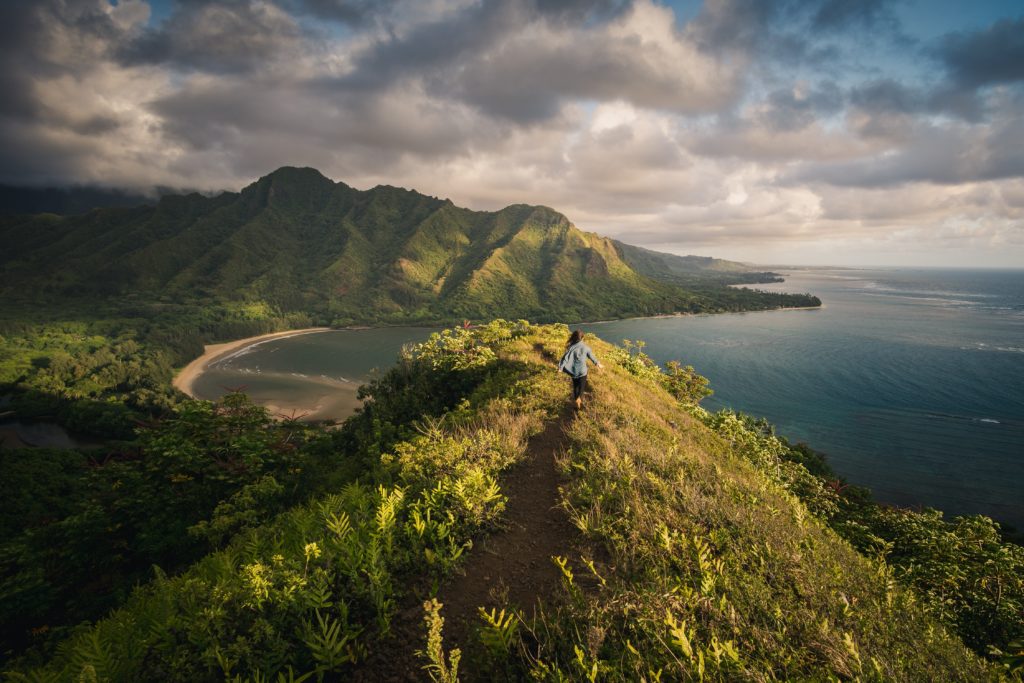
Toby: That’s just one of the many, many Hawaiian legends that are out there. And I like to weave them into my books as little anecdotes. You feel like you get a little knowledge when you’re reading.
Joanna: I love that, too. And I want to come back to the volcanic sites, because I lived on the Pacific Ring of Fire in New Zealand, and when you’re surrounded by volcanoes, they become part of your life, but you say you have a home halfway up an extinct volcano.
How does the volcanic aspect impact island life?
Toby: Well, it’s most prevalent on the Big Island of Hawaii, of course. And you probably saw in the news about the huge explosion that happened last year (2018). Hundreds of thousands of acres of fresh lava. That island is our biggest island, and it’s actually the size of a couple of states in the United States. The rest of the islands are proportionally much smaller.
We also have some land on the Big Island, and we bought that about 10 years ago, and on the Big Island you can still buy ocean front property. However, some fresh lava might just blow right over your property and become even more ocean front. The safety of the island is broken up into zones, and that is extrapolated to the other islands as well.
I think the biggest impact for the state overall is what we call vog. It’s like volcanic fog, put together, Vog. The prevailing direction is away from the islands. For the most part, it’s a trade wind direction.
But when the wind shifts and we get what we call Konas — Konas means it blows towards the direction of Kona — then the vog comes and settles. It can be quite difficult for people with respiratory issues. That’s another reason why we haven’t developed the land that we bought 10 years ago thinking we would do our retirement home there.
And now I’m like, ‘Well, between the vog and the possibility of an actual lava flow, I think that we’re just gonna sit on that land, and maybe our kids will inherit it, and maybe in 30 years things will have calmed down.’ So, yes, life is very impacted depending on where you have set yourself up to live.
Joanna: Well, that’s so interesting. If people are going on holiday to Hawaii, do they make sure their hotel is like in a safe zone?
Toby: I don’t think that’s actually something you need to worry about too much. But if you had asthma or something, you might want to check which areas get a lot of emissions. So we have a diligent government that’s keeping a close eye on the safety of our visitors and that Hawaii is primarily a tourist attraction. And so we’re certainly not wanting visitors to come and have a health impact, you know.
The lava itself is quite the tourist attraction.
For years we had a steady slow lava flow on the Big Island that tourists love to see, and it was so much fun. I went with my husband as well. You hike, you can rent a bike and cycle across the raw lava to see the actual flow area. Last year that whole thing went crazy, and it’s an incredible thing to see.
So the good news about the Big Island’s volcanic activity is that it’s not super explosive like Krakatoa or anything. It’s more of a flow that’s an incredible phenomenon to witness.
Joanna: Wow, the islands are born of fire indeed.
Toby: Yes.
Joanna: I guess everyone thinks about surfing and the water in Hawaii. In your memoir, you talk about being part of that surf community when you were younger.
Where are the best spots even if you’re not a hardcore surfer? Let’s assume nobody listening is a hardcore surfer!
But where are the places that are amazing to go into the ocean?
Toby: I just think that if you’re visiting, and you’re probably gonna go to Oahu, which is we call ‘The Gathering Place.’ Each island has a little nickname, tag line, you know. Oahu is ‘The Gathering Place.‘
And the most popular tourist spot is Waikiki, and Waikiki actually has wonderful waves, very gentle, perfect for beginners, sand bottom.
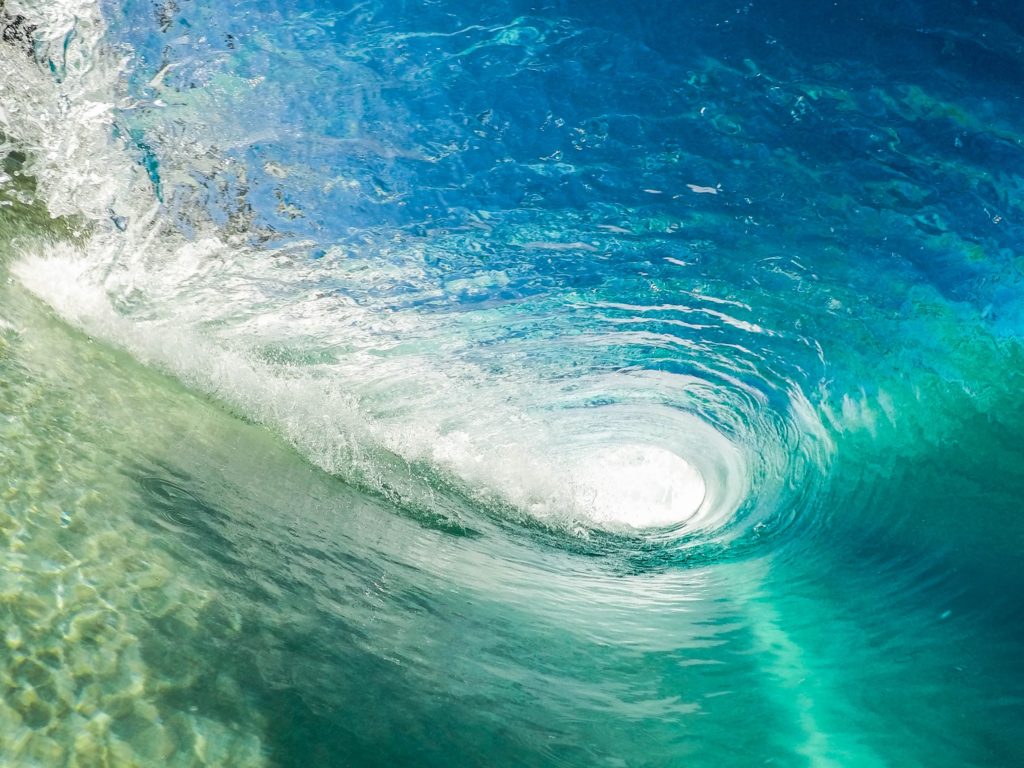
If you go to the North Shore of Oahu, that’s where I have a thriller that’s about the professional surf scene, Rip Tides. It’s not a very good place to start surfing, but a wonderful place to sit on the beach. Go to Pipeline, which is a very famous beach break and you’ll see the most incredible athletes in the world compete for the Triple Crown of Surfing in the winter. From November to January they hold contests there, and it is totally worth seeing.
On Maui, a popular attraction is what they call Jaws or Pe’ahi. We have 30-foot surf there that are perfectly shaped and rideable and you have these incredible world-class athletes — that’s what they deserve to be called — riding these insane building-sized waves. There’s just nothing like it when you sit on the bluff above Jaws, and that is my island, well, both my islands, I call them my islands. Kauai is my first island, and Maui is my second island.
I did spend time also on Oahu and the Big Island. But I have to say Jaws is worth seeing. Many people hear about it on the grapevine, so you can just google that, and you can see according to a weather report when it’s going to be breaking. The county finally bought the bluff that’s above the surf break, and the surfers approach on jet skis and boats because there’s no way to get to it from the land. It is truly a spectacle.
The waves pound down so hard that they shake the earth, and you can hear this booming sound. It just fills you with adrenaline. It’s incredible.
Joanna: That’s amazing, and it’s interesting that you say they’re world-class athletes. Of course, the pro surf scene really is like that now, but when you were growing up there in the ’60s and ’70s, surfing wasn’t quite as famous.
How has Hawaii changed since you grew up there?
Toby: The biggest shift that we have seen in my lifetime is the move from an agricultural state primarily growing sugar and pineapple to a tourist and development place. That radical shift changed everything.
Kauai experienced a gigantic change when the pineapple and sugar left. That was probably in the mid to late ’80s and ’90s. I’m fuzzy on the dates. Nothing replaced that agricultural practice except for development. Real estate people came in and bought up all the land, and now you have all these houses.
You have a very high divide between the wealthy owners who for the most part live off the island — this is their vacation home from somewhere else — and the people who live on the island trying to make a living. That is something I write about in my fiction over and over again. The contrast between the haves and the have-nots in a place that is so beautiful and desirable to visit. The native people cannot afford to even own their homes there, which I find tragic and wrong.
Joanna: You write in your memoir about traveling back and forth to California while you were growing up, and now I think you’re actually in California, right?
Toby: Yes.
Joanna: A lot of people who are not from America think that California and Hawaii are similar because they have beaches.
What do you see as the difference between California and Hawaii? And where is your home now?
Toby: That’s such a great question, and that’s so personal. I have always had this duality in my heart, having been born in California and have high-achieving grandparents on both sides of my family.
My one grandfather was a self-made millionaire back when that meant something. And my other grandfather was a pioneer in the field of marine biology, one of the first people to get his doctorate and a world expert on sardines, which were a primary food source in all through the early 20th century until, of course, they were fished practically out of existence.
So I had these incredibly amazing grandparents, and both of my parents were reacting to that. They were part of that generation who wanted to forge their own path and do their own thing. They went to Hawaii to do that. My dad was a surfer. My mom grew up in Hawaii as the daughter of a scientist. They both embraced the hippie lifestyle, they hated plastic. Everything was organic before that was a thing.
So I experienced this duality of the hippie life in the jungle — literally living in tents and off the grid — then going back to visit my grandparents periodically or being rescued by them. When we ran into financial problems or health problems, the grandparents would rescue us.
There was this back and forth, the duality between having nothing and living in the jungle and then going to my grandparents’ country club or having clothing purchased for me every time I went back to the mainland. We call it the mainland.
Now I live on the mainland, and I own a home on the mainland, and I own a home in Maui. I think what I’ve done is just embraced that duality. The two coasts are very, very different. I live in Northern California, about an hour north of San Francisco. The ocean is extremely cold. It is rough, it is unfriendly. I can barely stick a toe in it.
It is not for the faint of heart. There are surfers here I just hats off to them. They’re head to toe in rubber, you know, wetsuits and great white sharks are a very real thing. And I like to walk along the beach and look at it. Whereas in Maui I love to swim in the ocean every single day, and I feel embraced by that element. So it is the same Pacific Ocean, but it is very different 6000 miles apart.
Joanna: It’s so interesting. I’ve traveled more in the South Pacific — New Zealand, Tonga, Fiji, and places like that. It’s similar Polynesian-type culture, lovely weather, great ocean, but I always feel like I’m on holiday. I can’t work in a place like that!
We’re both writers. We write for our living, and I say to my husband, ‘I could never live somewhere where the weather is always nice and the ocean is just great.’
Do you find that you work better when you’re in San Francisco and you’re on holiday in Hawaii, or is it different for you?
Toby: Oh, it’s different for me. I have to close myself in no matter what, you know. But I enjoy nature. Nature is absolutely essential for my well being and my mental health.
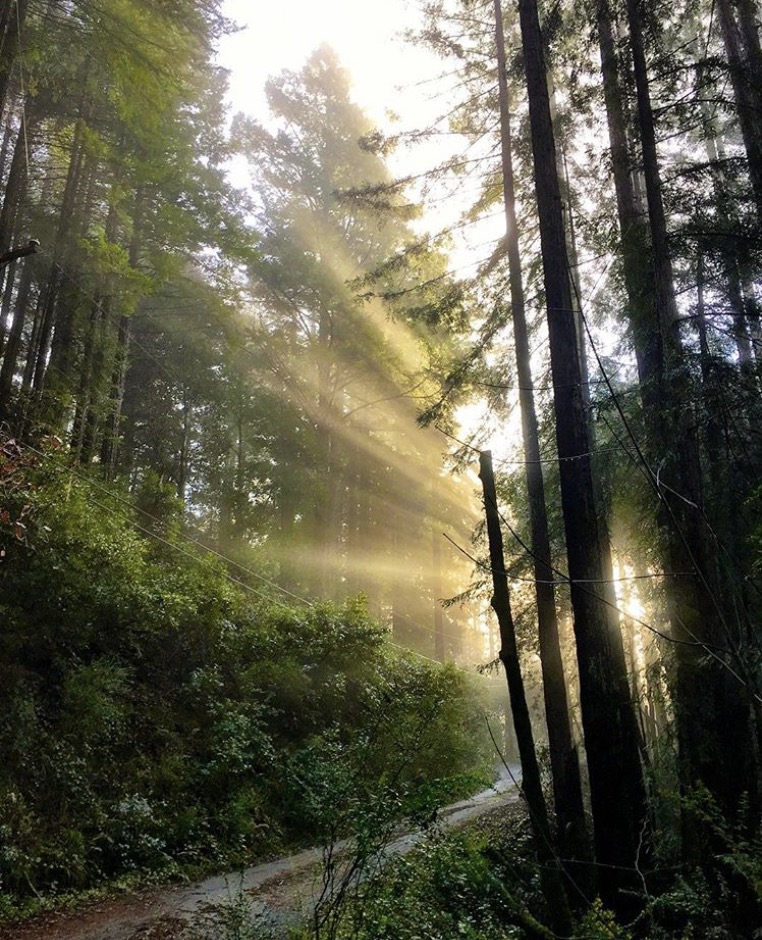
I live in an extremely beautiful part of Northern California, right on the Russian River in the redwoods. Every single day I start my day with a walk in the redwoods, and I call it forest bathing. You know, that’s quite the thing from Japanese culture. They actually practice this. They call it forest bathing…
Joanna: Wait, is that naked forest bathing?
Toby: Not naked, no! Although it makes you think of that. It’s just the practice of meditation in nature and turning off all electronic influences and experiencing trees and nature, which I believe, as a therapist, is really critical to mental health for modern society.
In Hawaii, I do the same thing. I just go to the beach instead, and I take a beach walk, and I walk also in the forest near my house. So I do the same routines, and then I just close myself into my writing studio. So I get my nature bath in the morning, and then I close myself in, and then at the end of the day, I do it again. For me, it’s just essential to live somewhere beautiful and natural, and so I’ve set my life up so that I can.
Joanna: Which is fantastic.
Your memoir definitely has a darker side. And, of course, I’ve read some of your mystery series set in Hawaii, which also have murder and mystery in.
Where do you find the inspiration for writing that darker side of Hawaii?
Toby: One of the questions you sent me by e-mail was about some of the books that I would recommend besides my own books. And as I was thinking about that, it highlighted again to me the hole in my reading bookshelf that led me to start writing my own books. The hole was for entertaining, fast-paced stories about the authentic Hawaii.
The books that I would recommend that you read, they’re either literary and slow-paced or very culturally focused, not a vacation read. I felt like I wanted to read about Hawaii, but I didn’t want to sit down with something that was hard work on my brain. I wanted to lay on my beach towel and read an entertaining mystery set in the real Hawaii.
I was always journaling, and I wanted to be a writer from an early age, but I didn’t actually start writing seriously until I was over 40 years old. And this was because I really wanted to have a ‘real’ career that, you know, made a living, and I bought into the lies of the time that you couldn’t really do that. I also had trouble finding my voice. I was trying to write literary fiction like people from the mainland.
It wasn’t until I found a story and a character, which was Lei Texeira. She is a multicultural police officer who investigates the crimes I write about. It wasn’t until I found my niche of an entertaining fun read where you actually learn unique things about Hawaii that I found my flow.
I began writing, and I was unstoppable — four or five books a year. My memoir is very different though. I’ve been working on that on and off for 10 years. A personal memoir is such a different kind of work, but I try to have the same feeling in my memoir. Like, even though there are dark things, it’s an entertaining and fast-paced read.
Joanna: Absolutely. Now you’ve teased us with the other books you would recommend.
So apart from your books, what else should people read about Hawaii?
Toby: Some of them that I have particularly loved are a little bit older or something you’ll want to search for. I absolutely love Susanna Moore. She writes literary stories with a suspenseful theme. The Whiteness of Bones is one of her stories. They’re set in plantation times on Hawaii in the time of the agricultural camps and they have a wonderful juxtaposition of white culture, Hawaiian culture, Filipino culture.
Something people don’t know about Hawaii is that there aren’t just white people and Hawaiian people. There are all these incredible varieties of races over here that all came as a part of the sugar culture. They all each had their own ethnically based camps.
That patriarchal era has passed, of course, but all the descendants are now living together and it’s a real melting pot of different races. So Susanna Moore explores that in a beautiful lyrical voice. It’s haunting, and you’ll learn things in her books.
Alan Brennert is another one who writes authoritatively about Hawaii. He writes historical fiction.
I also love the voice of Kiana Davenport. Her Shark Dialogues is wonderful. She is a native Hawaiian writer with a powerful voice and writes a kind of composition of legend and story mixed in with the modern culture.
If you’re looking for a vacation guide, I recommend the Frommer’s Hawaii guide. Frommer’s is a very reliable brand, and one of my friends, Shannon Wianecki, who writes for a Hawaii magazine and is a terrific writer about the culture, she put together the latest Frommer’s, and I think it’s wonderful as a guide book.
Joanna: Brilliant. Wow! The problem with this podcast is every time I ask people this question, I end up with a massive reading list!
[Sign up here to get the reading list every month!]
Joanna: And of course, we’ve got your books, too. Tell people about the first book in your main series.
Toby: Blood Orchids is set on the Big Island of Hawaii. The next one, Torch Ginger, is set on Kauai. The third, Black Jasmine, was set on Maui. Are you getting a theme here?!
Joanna: How many islands are there?
Toby: There are eight major islands, but, for instance, Maui is actually composed of three islands. There are two small ones off the coast that are also part of the county.
So, I took the books to all the different islands to give people a different feel. Because each island really does have its own flavor.
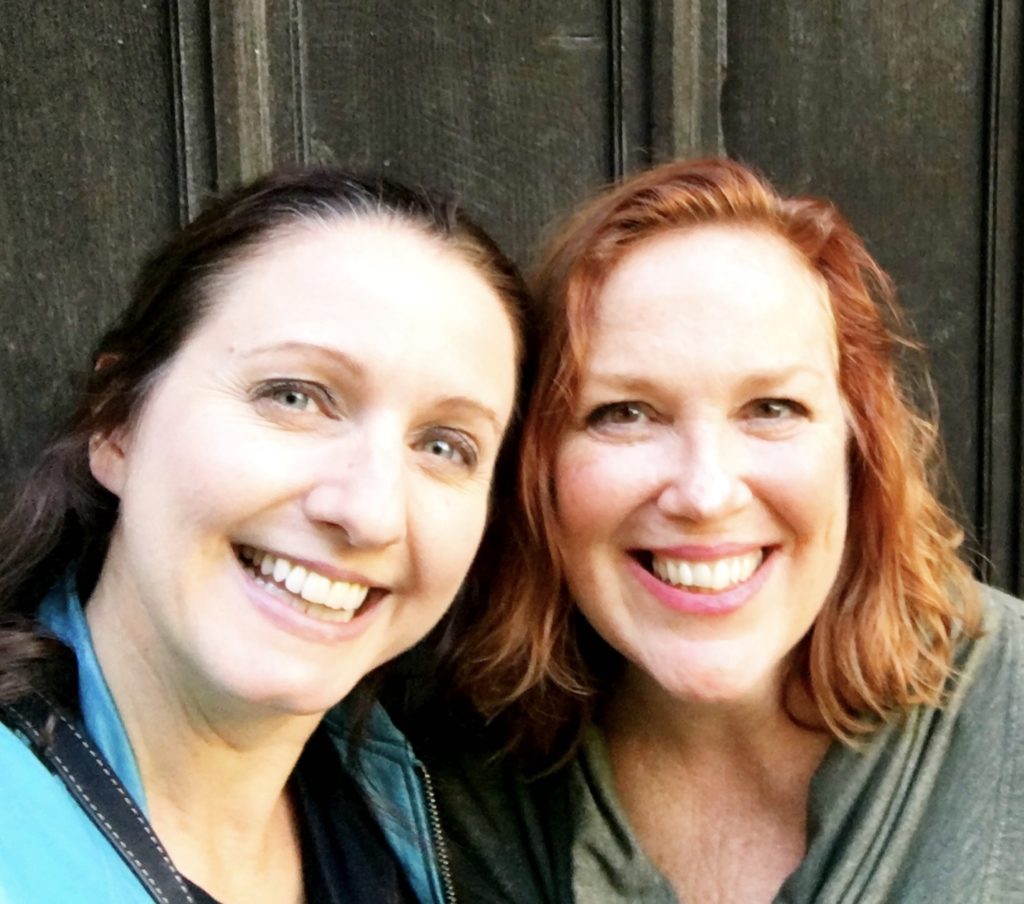
Joanna: That’s fantastic. Now, final question. You and I met in person, which was awesome, in London last year. So, I wanted to ask you a bigger question.
Why do you travel and what does travel give you?
Toby: I’m a bit of a travel addict as are you. I remember talking about that. I feel that travel expands our minds.
Travel teaches us things we cannot learn any other way.Click To TweetThere’s always an adventure even when you’re going on a prepackaged tour with every possible thing figured out. Unexpected things will happen. Insights will happen.
Travel makes me feel more alive, and I think that’s the most wonderful thing about it.
You met me on one of the few package tours I’ve ever done — the Orient Express. It was a wonderful trip and so many exciting things happened. I went with a writer’s group. But normally my husband and I like to travel in our Airstream, and right now we are working on putting together a very long six months to a year travel through the national parks of the United States. I plan to write about everything and make a book, another memoir book, which I’m already putting together from our travels.
To me, traveling is one of the great joys of life. One of the great things that make us human, that sets us apart from other creatures is this desire to see new horizons and have new experiences, and that comes from within. Some people really love that, and some people don’t. I’m one of those people who really love it.
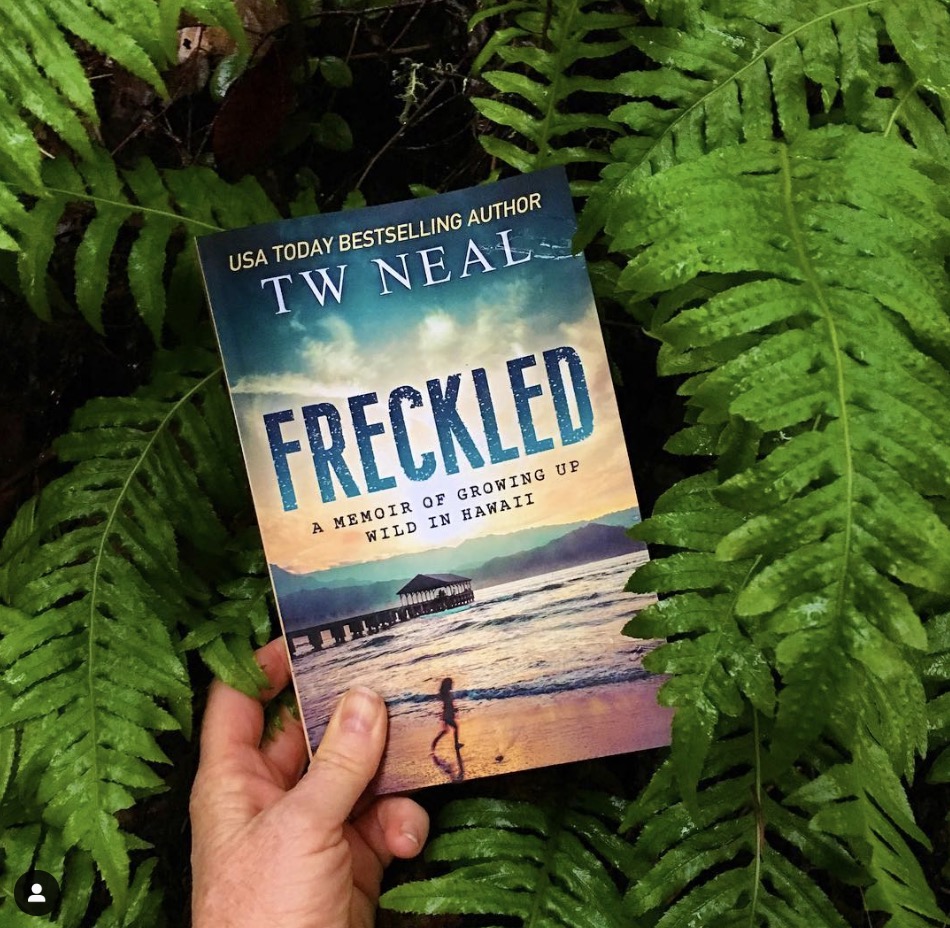
Joanna: Me too, and I think our listeners are as well.
Well, I hope you’ll come back on the show and talk about the Airstream adventure because the national parks in America are incredible. Until then, where can people find you and your books online?
Toby: Take a look at www.tobyneal.net, or you can just google me and all sorts of things pop up.
Jonna: Fantastic. Thanks so much for your time, Toby. That was great.
Toby: All righty. Aloha.

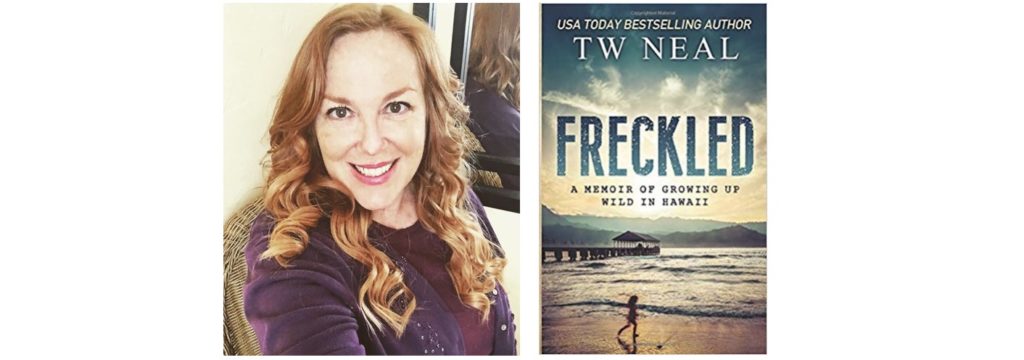
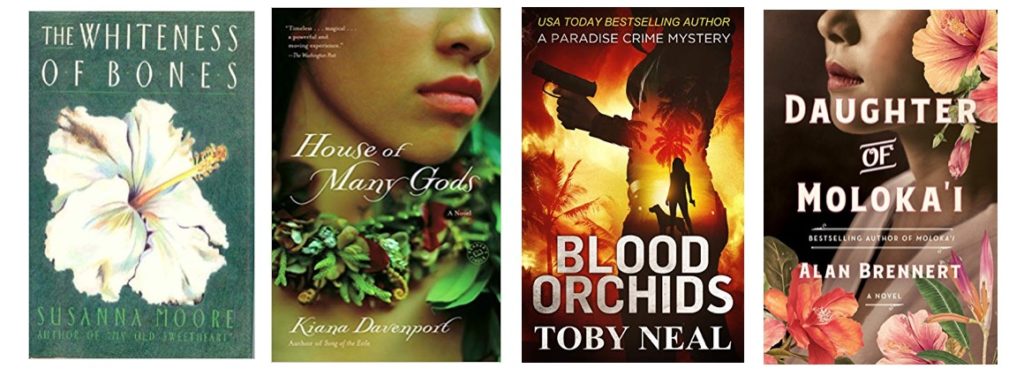
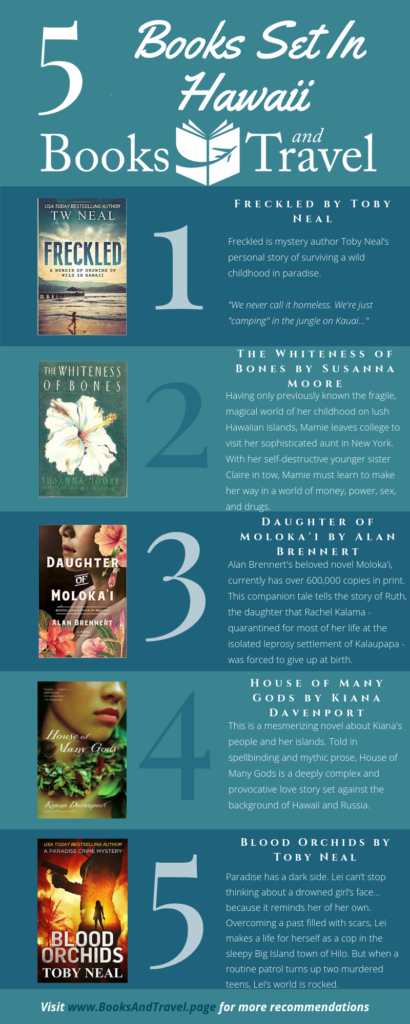
Toby is absolutely amazing.
Ho Jo,
An enjoyable episode on the back of listening to Toby on The Creative Penn podcast. Another destination to consider!
Thanks always, Lyn